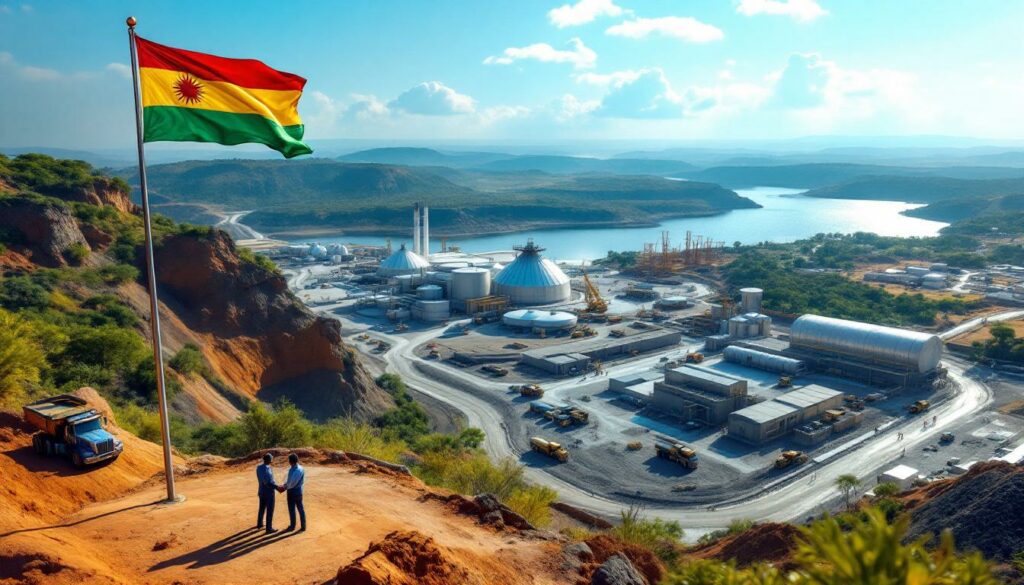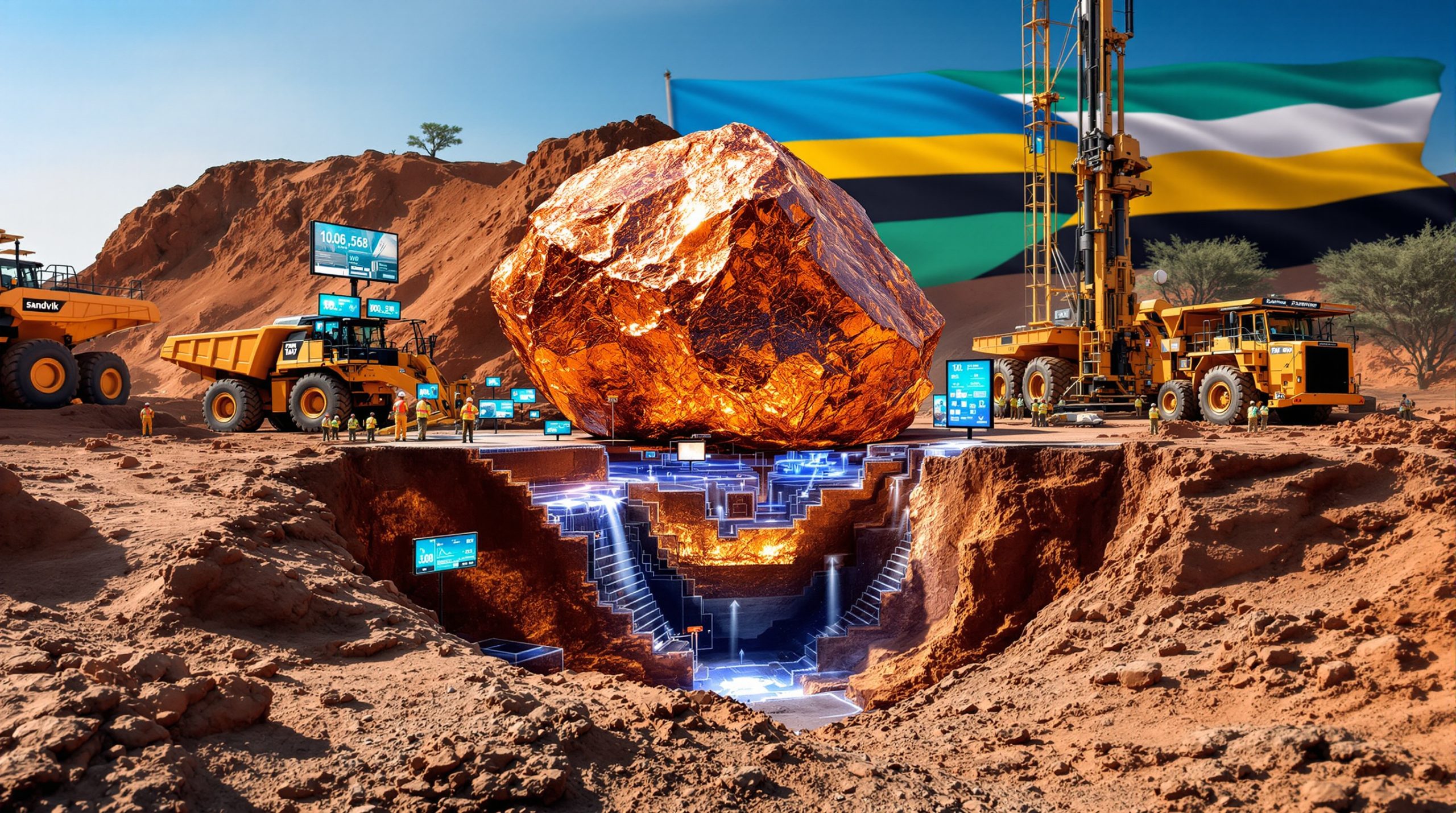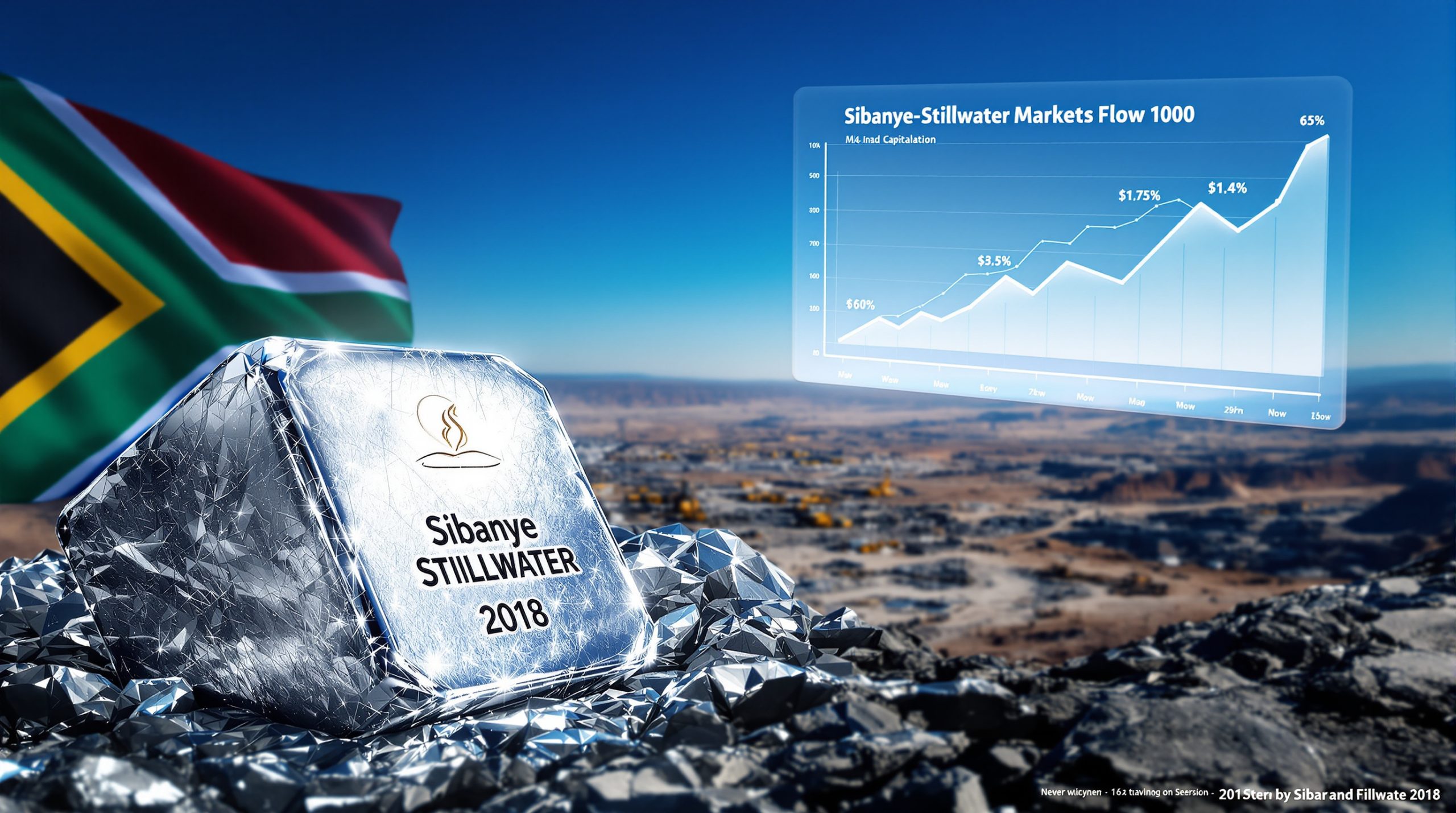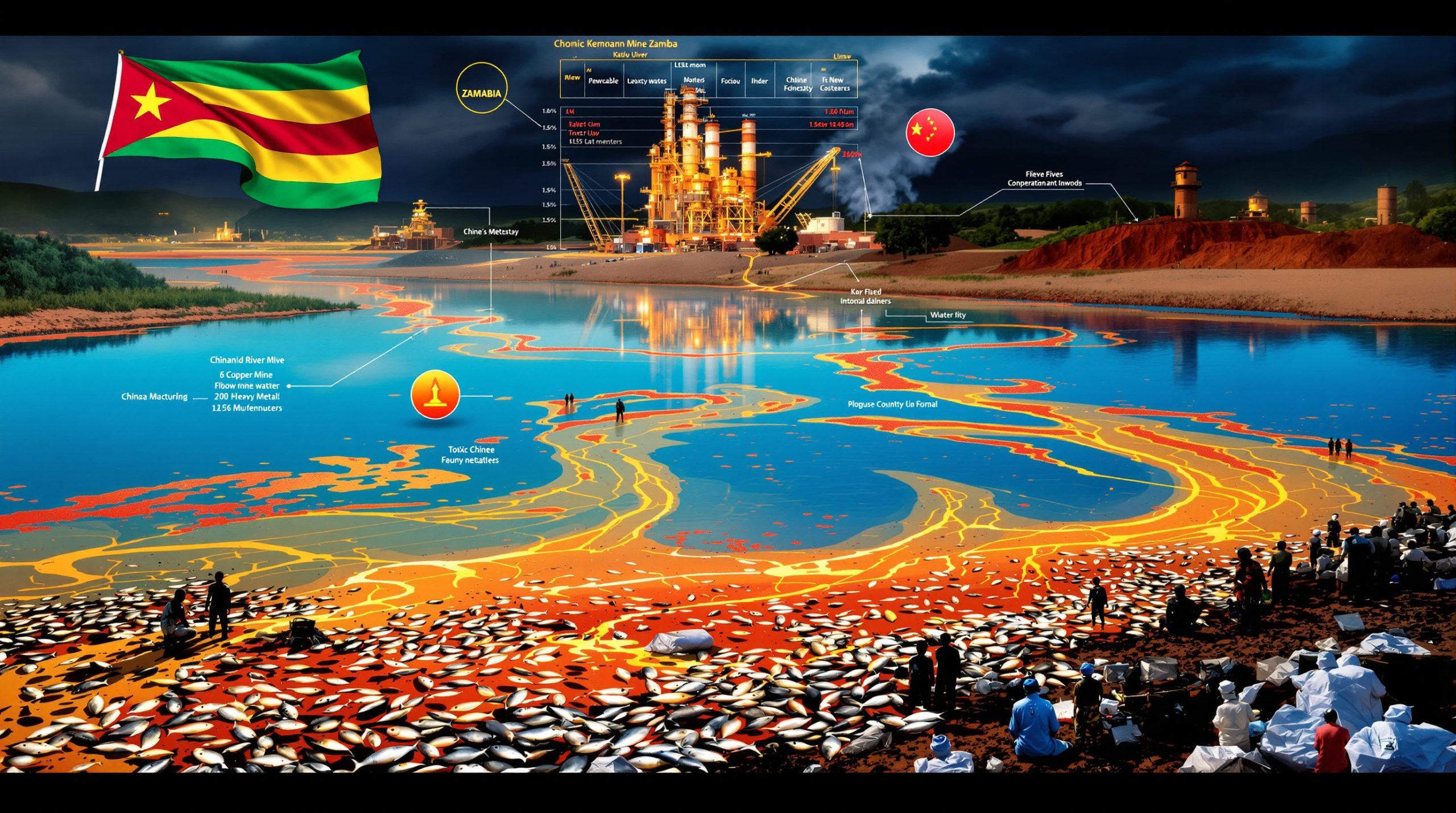How is China Investing in Malawi's Mining Sector?
China's commitment to Malawi's mining sector represents a transformative economic partnership, with investments totaling $12 billion directed toward developing the landlocked southeast African nation's rich mineral resources. These investments position Malawi to become a significant player in the global critical minerals transition supply chain, with China securing access to resources vital for its manufacturing and technology sectors.
The investments come at a crucial time as global demand for critical minerals continues to rise, driven by green technology adoption and the ongoing energy transition.
The $7 Billion Titanium Mining Deal
The cornerstone of China's investment is the $7 billion commitment from Hunan Sunwalk to develop titanium mining and processing facilities in Salima, Malawi. This comprehensive investment includes:
- Construction of state-of-the-art titanium extraction facilities utilizing advanced technologies
- Development of processing plants that add value to raw materials before export
- Technology transfer programs designed to build local expertise and operational capabilities
- Community investment initiatives focused on sustainable development and social infrastructure
This investment represents one of the largest mining investments in Malawi's history and signals China's confidence in the country's titanium resources.
The $5 Billion Special Economic Zone
Complementing the titanium mining investment, China has committed an additional $5 billion to establish a special economic zone (SEZ) in Chipoka. This economic zone will:
- Create a dedicated hub for mineral processing and value addition
- Develop supporting infrastructure essential for efficient mining operations
- Establish modern export facilities to improve market access for Malawi's minerals
- Foster skills development and technology transfer to build local capacity
The SEZ represents a strategic approach to mineral development that extends beyond mere extraction, focusing on building an entire ecosystem for sustainable modern mine planning operations.
What Critical Minerals Does Malawi Possess?
Malawi's geological landscape harbors significant deposits of minerals that are increasingly essential for global technology and energy transitions. The country's mineral wealth spans several categories of critical resources that position it as a potentially significant supplier in coming decades.
Rare Earth Elements
Malawi has attracted substantial international attention for its rare earth elements (REEs) potential, which are crucial components in high-tech manufacturing:
- The Kangankunde rare earths project has secured proposed funding of $120 million from a consortium including Ecobank, the European Investment Bank, and Gerald Group
- Australia's Lindian Resources is actively developing this project to meet growing global demand for these strategic elements
- REEs from this project will supply critical components for manufacturing high-tech products including electric vehicles, wind turbines, and sophisticated electronics
REEs are particularly valuable as they're essential for green technology development, making Malawi's deposits strategically important in the global transition to renewable energy.
Uranium Resources
The country's uranium sector is showing promising signs of revival after earlier operations:
- Lotus Resources has reportedly secured $38.5 million from South African banks to advance development
- The Kayelekera uranium project is targeting first production in Q3 2025, returning a previously operational mine to production
- Global demand for nuclear fuel is increasing as countries seek reliable low-carbon energy solutions to meet climate goals
Malawi's uranium resources could position it as an important supplier for the growing number of nuclear power plants under construction globally, with uranium market dynamics continuing to evolve.
Titanium and Graphite Deposits
Malawi hosts world-class deposits of industrial minerals essential for manufacturing and technology applications:
- Sovereign Metals has raised $40 million to develop the Kasiya rutile/graphite project
- The site contains the world's largest known rutile deposit and second-largest graphite reserve
- Production targets include 245,000 tonnes per year of rutile and 288,000 tonnes per year of graphite
- The project has an estimated 25-year operational lifespan based on current resource estimates
These deposits are particularly significant as both rutile (titanium dioxide) and graphite are essential materials for industries ranging from aerospace to battery manufacturing.
What Economic Impact Will These Investments Have?
The mining investments secured from China and other international partners are expected to dramatically transform Malawi's economic landscape, creating opportunities across multiple sectors and potentially redefining the country's economic profile.
Projected Growth in Mineral Exports
The mining sector's contribution to Malawi's economy is set for exponential growth over the next two decades:
| Period | Projected Mineral Exports |
|---|---|
| 2026-2040 | $30 billion |
This projection represents a fundamental shift for Malawi's export profile, which has historically been dominated by agricultural products. The diversification toward mineral exports provides greater economic stability and resilience against agricultural market fluctuations.
GDP Contribution Increase
Mining's contribution to Malawi's GDP is expected to rise dramatically as projects move from development to production:
| Timeframe | Mining Contribution to GDP |
|---|---|
| Current | Less than 1% |
| By 2030 (projected) | 10% |
This tenfold increase would represent one of the most significant sectoral shifts in Malawi's economic history, creating a new pillar for national development alongside agriculture.
Employment and Skills Development
The investments include substantial commitments to human capital development:
- Creation of thousands of direct jobs in mining operations and processing facilities
- Development of tens of thousands of indirect jobs in supporting industries and services
- Building local technical expertise through comprehensive skills transfer programs
- Supporting educational initiatives focused on mining engineering, geology, and environmental management
These employment opportunities are particularly valuable in a country where job creation has been a persistent economic challenge.
Why is China Investing in African Minerals?
China's strategic interest in Malawi's mineral resources aligns with broader geopolitical and economic objectives that reflect its evolving position in global supply chains and industrial development.
The Hunan Province Connection
China's Hunan province is emerging as a key player in China-Africa relations, with a particular focus on resource partnerships:
"Hunan is the home of Sany, which provides heavy industry equipment including from its considerable South African base. It's also the home of BYD, which provides electrified vehicle mobility, as well as being the home of China's green railway industry," notes Dr. Lauren Johnston, Sydney University Associate Professor.
This provincial specialization creates a strategic imperative for securing the mineral resources needed to sustain manufacturing growth in these sectors.
Johnston further explains: "The Hunan model is now this amazing model where China is focused on every aspect of how they can develop China-Africa ties… There's this huge 'going out' model into Africa, which is totally perfectly primed to tap into Africa's resource nationalism."
Resource Security Strategy
China's investments reflect a broader strategy to:
- Secure reliable access to critical minerals needed for its manufacturing and technology sectors
- Diversify supply chains away from politically complex regions where access might become restricted
- Build long-term economic partnerships in Africa that extend beyond mere resource extraction
- Support its domestic manufacturing base with stable raw material supplies
This approach helps China maintain its manufacturing competitiveness while reducing vulnerability to supply disruptions.
Response to Global Trade Tensions
These investments can be viewed as part of China mining expansion strategy to navigate an increasingly complex global trade environment:
- Offset potential trade losses with Western markets due to ongoing geopolitical tensions
- Establish alternative supply chains for critical materials that bypass potential trade restrictions
- Strengthen diplomatic and economic ties with African nations as part of broader South-South cooperation
- Create new markets for Chinese equipment, technology and expertise
By securing mineral resources directly from source countries, China reduces its exposure to potential supply chain disruptions resulting from trade disputes.
How Does This Compare to Other African Mining Investments?
Malawi's mining sector is developing in a context of increased global competition for critical minerals across Africa, with distinctive features that set it apart from other resource-rich countries on the continent.
Regional Comparison
| Country | Key Minerals | Major Investors |
|---|---|---|
| Malawi | Rare earths, uranium, titanium, graphite | China, Australia |
| DRC | Cobalt, copper, lithium | China, Western mining companies |
| Zambia | Copper, cobalt | China, Canada, UK |
| Zimbabwe | Lithium, platinum | China, South Africa, Australia |
This regional context shows China's broad engagement across multiple African countries as part of its resource security strategy.
Unique Aspects of Malawi's Approach
Malawi has distinguished itself through several innovative approaches to mineral development, as noted by mining experts:
"I would ask, and this is a plea to every country in Africa, if you want investment, opensource your geological survey data, allow it to be transparent and demand value for access to your resources, and make it an open conversation," emphasized Mark Cutifani, former Anglo American CEO, speaking at the London Indaba.
Malawi has embraced this approach by:
- Opening its geological survey data to the world, making resource information accessible to potential investors
- Focusing on value addition through processing facilities rather than just raw material export
- Securing investments that include infrastructure development to address logistical challenges
- Emphasizing skills transfer and community development as integral components of mining agreements
These elements create a more sustainable development model that extends beyond simple resource extraction.
What Challenges Must Malawi Address?
Despite the promising investments, Malawi faces several significant challenges that must be navigated to ensure sustainable development of its mining sector and maximize benefits for its citizens.
Infrastructure Limitations
As a landlocked country, Malawi faces significant logistical challenges that impact mining economics:
- Limited transportation networks for moving minerals to ports, with the nearest ocean access hundreds of kilometers away
- Inadequate power supply for processing operations, with national electricity production far below what large-scale mining operations require
- Need for comprehensive water management systems for mining operations in a country where water resources are already under pressure
- Telecommunications infrastructure that requires upgrading to support modern mining technologies
Addressing these infrastructure gaps is essential for the viability of large-scale mining operations.
Environmental Considerations
Sustainable mining practices will be essential to protect Malawi's natural resources:
- Managing environmental impacts of large-scale mining in ecologically sensitive areas
- Ensuring water quality protection in a country heavily dependent on Lake Malawi for fishing, transportation, and tourism
- Developing appropriate mine rehabilitation plans that restore land to productive use after mining
- Balancing resource extraction with biodiversity conservation in a country known for its unique ecosystems
The proximity of some mining operations to Lake Malawi creates particular environmental challenges that require careful management.
Governance and Transparency
Effective management of mineral wealth requires robust institutional frameworks:
- Strong regulatory frameworks to prevent resource exploitation and ensure fair returns to the country
- Transparent revenue management to ensure mining benefits reach Malawian citizens
- Balancing foreign investment attraction with protection of national interests
- Building technical capacity within government institutions to effectively oversee complex mining operations
These governance challenges are critical to address in order to avoid the "resource curse" that has affected other mineral-rich African nations.
What's Next for Malawi's Mining Sector?
The mining sector in Malawi is poised for significant development in the coming years, with several key projects advancing toward production and policy frameworks evolving to support sustainable growth.
Upcoming Projects and Timelines
Several key projects have defined timelines that will shape the sector's development:
- Kayelekera uranium project: First production expected Q3 2025, potentially coinciding with stronger uranium markets
- Kasiya rutile/graphite project: Development underway following $40 million investment, with production timeline to be determined
- Special economic zone in Chipoka: Construction beginning with $5 billion Chinese investment, creating a hub for mineral processing
These project timelines create a roadmap for Malawi's mining sector development over the next five years.
Policy Developments
Under Mines Minister Ken Zikhale Reeves Ng'oma, Malawi is undertaking significant policy reforms:
- Developing new mining regulations designed to maximize national benefits while remaining attractive to investors
- Creating frameworks for local content and participation to ensure Malawians benefit directly from mining activities
- Establishing environmental standards for sustainable operations that protect the country's natural resources
- Revising fiscal regimes to ensure fair government revenue while remaining competitive globally
These policy developments aim to create a balanced framework that attracts investment while protecting national interests.
International Engagement
Malawi is increasing its profile in international mining forums to attract further investment:
- Participation in the upcoming Ministerial Forum at African Mining Week in October
- Engagement in the China-Africa Cooperation on Critical Minerals Roundtable
- Developing partnerships with international financial institutions to fund mining infrastructure
- Building relationships with technical training institutions to develop local mining expertise
This international engagement strategy aims to position Malawi as an emerging mining destination with significant potential for industry evolution trends.
FAQ: Malawi and China mining investments
How will local communities benefit from these mining investments?
The agreements include provisions for community investment, skills development, and local employment. Additionally, the increased economic activity is expected to create opportunities in supporting industries and services, from food supply to transportation and accommodation. Infrastructure developments associated with mining projects, such as improved roads and power supplies, often benefit surrounding communities as well.
What environmental safeguards are in place for these mining projects?
Mining companies operating in Malawi must comply with environmental regulations that include impact assessments, rehabilitation plans, and ongoing monitoring. The government is working to strengthen these frameworks as the sector expands, with particular attention to water resource protection given the importance of Lake Malawi to the country's ecosystem and economy.
How do these investments affect Malawi's relationship with other international partners?
While China is making significant investments, Malawi maintains relationships with multiple international partners. Projects like Kangankunde and Kayelekera involve Australian companies and European/South African financing, demonstrating a diversified approach. This balanced engagement helps Malawi avoid over-dependence on any single partner while leveraging expertise and capital from various sources.
What role will value addition play in Malawi's mining strategy?
Both major Chinese investments emphasize processing facilities and value addition within Malawi, rather than simply exporting raw materials. This approach aims to maximize economic benefits and create additional employment opportunities, while also reducing transportation costs (particularly important for a landlocked country). By processing minerals domestically, Malawi can capture more of the value chain and develop industrial expertise.
Are You Looking to Capitalise on the Next Major Mineral Discovery?
Stay ahead of the market with Discovery Alert's proprietary Discovery IQ model, which provides instant notifications on significant ASX mineral discoveries and transforms complex data into actionable investment insights. Explore why historic mineral discoveries can generate substantial returns by visiting Discovery Alert's dedicated discoveries page and begin your 30-day free trial today.




